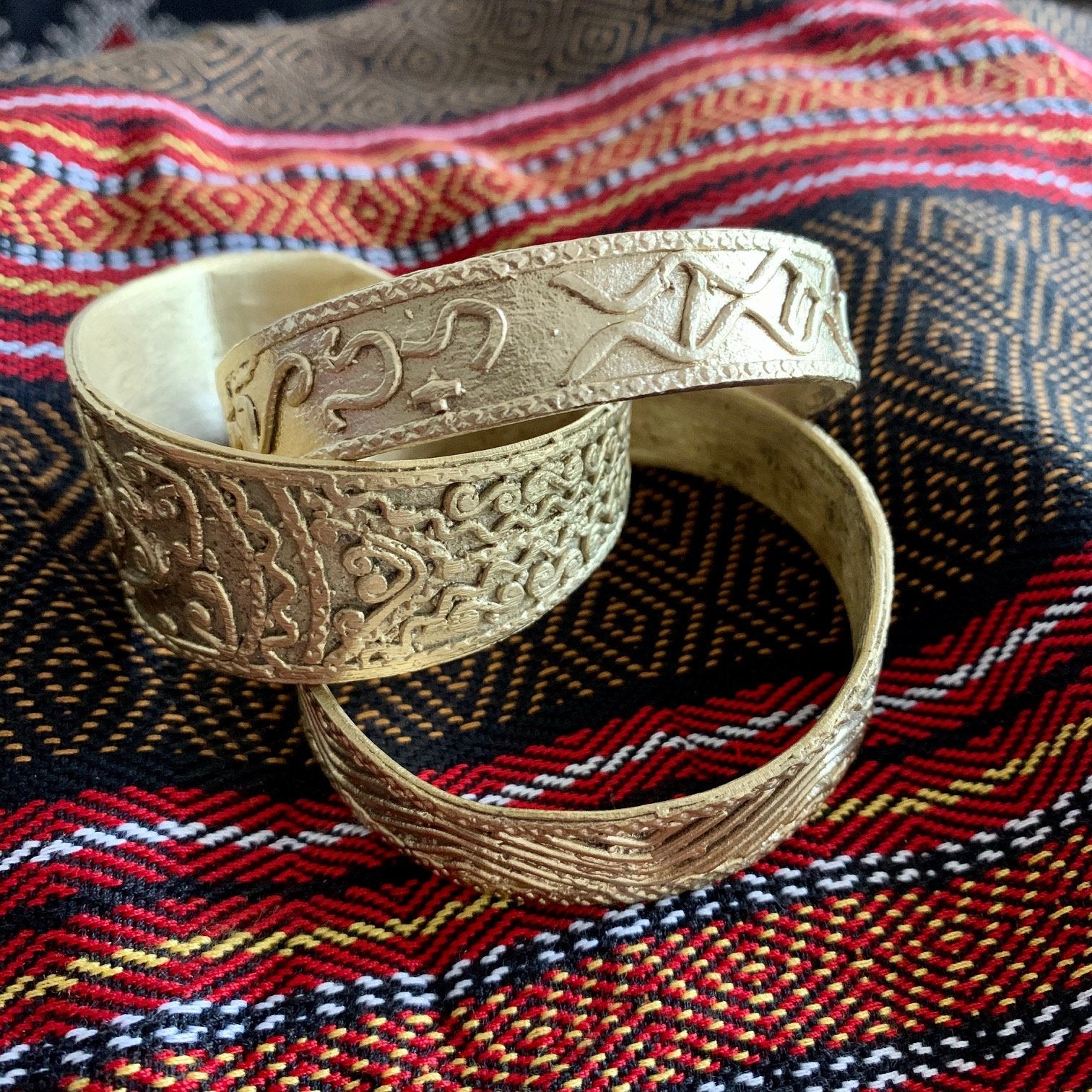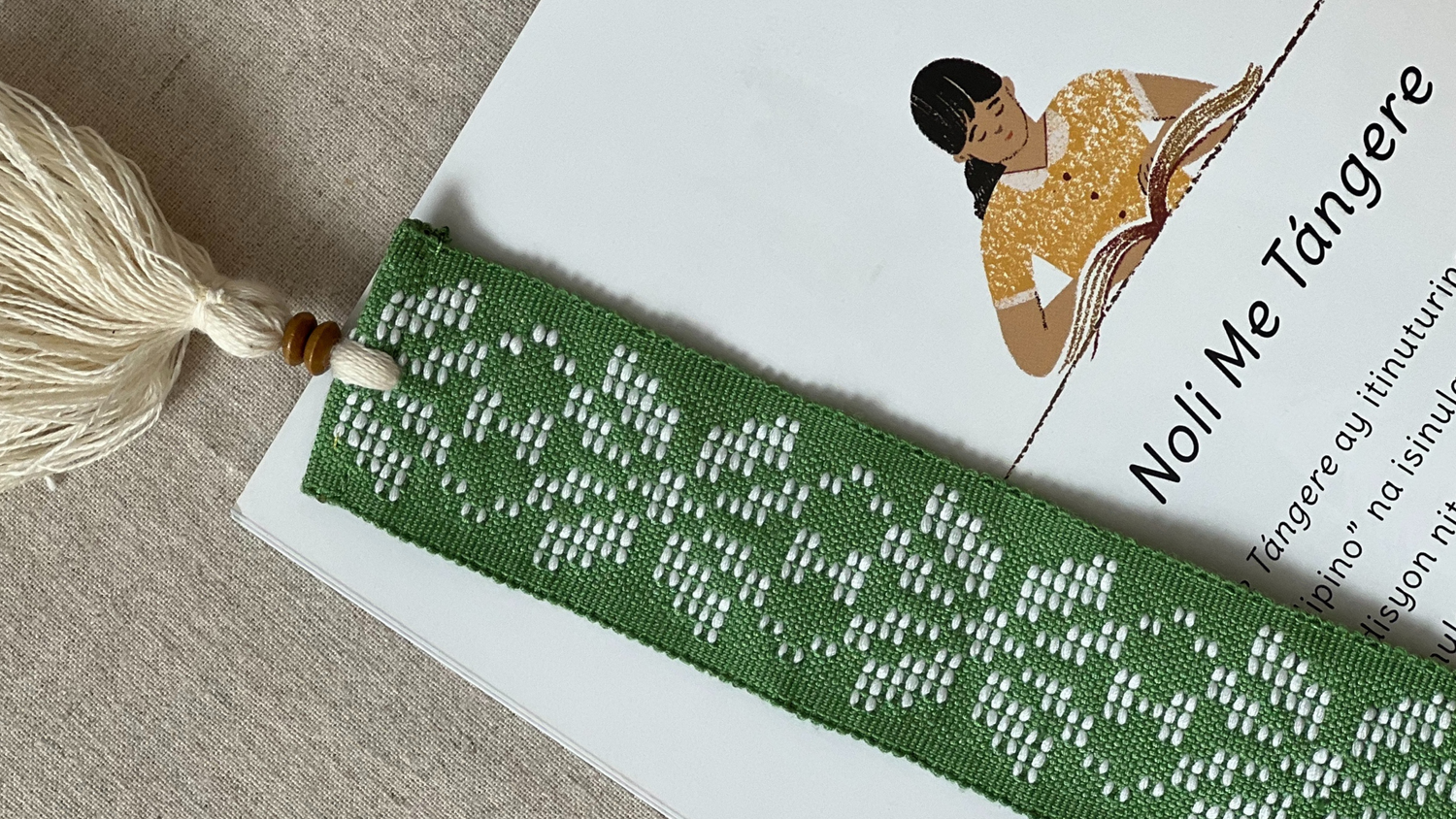Baybayin is one of the precolonial writing systems used by early Filipinos. The term “baybayin” comes from the Tagalog root word baybay, which means “to spell.”
For many years the script was incorrectly referred to as “alibata,” based on the arrangement of another alphabet system – Arabic, in which the first letters are called alif, ba, and ta.
When the Spaniards arrived in the Philippine archipelago, they observed that most of the natives, not just the elite, could read and write. The script was used not only to record but also to write poetry, incantations, and letters.
 The Monreal stone, discovered by students in the town of Monreal on Ticao Island in the province of Masbate, features inscriptions in Baybayin.
The Monreal stone, discovered by students in the town of Monreal on Ticao Island in the province of Masbate, features inscriptions in Baybayin.
Technically, the Baybayin is what is called an alphasyllabary. Each character is based on a consonant letter, with a vowel notation indicating the corresponding vowel sound. It has 14 syllabic consonant characters (15 if the “da” and “ra” consonants are separated, as shown in the images below) and three vowel characters (a, e-i, o-u).
Each consonant character combines the consonant sound and the vowel sound “a.” To change this to the “e-i” sound, a kudlit or mark is placed on top of the character; for the “o-u” sound, the mark is placed at the bottom. 
The Spanish friars studied Baybayin and used it to teach the Catholic religion to Filipinos. In fact, part of the Doctrina Christiana, one of the first books printed in the country, contains Baybayin script, along with Latinized Tagalog.

Pages from the Doctrina Christiana (1593) showing the "Hail Mary" prayer in Baybayin.
The Spanish also added a cross mark at the bottom of Baybayin characters to indicate consonants that stand alone. The word for God, Bathala, when written in the original Baybayin, reads Bahala. With the cross mark, the Spanish writers used another character, ta, and put a cross at the bottom to cancel out the “a” sound.
As the colonizers introduced their own system of writing, Baybayin began to be replaced with the Latin alphabet, and use of the script began to dwindle and eventually die out. Later versions of the catechism book Doctrina Christiana did not contain the script anymore.
However, there has been a resurgence of the use of Baybayin in recent years. Government organizations, cultural groups, and artists are actively bringing the ancient writing system back to life. It’s being taught in schools, workshops, and lectures. Words in Baybayin script are printed on clothing, posters, accessories, and even on the current batch of the Philippine Peso bills. Many have also started getting tattoos in Baybayin.

The Baybayin script on a 50-peso bill. The four characters read “Pilipino.”
The use of Baybayin is also being actively advocated and practiced by Filipinos in the United States, such as by artist Kristian Kabuay.
 From Kristian Kabuay's book, Sulat ng Kaluluwa
From Kristian Kabuay's book, Sulat ng Kaluluwa
Kabuay, based in San Francisco, considers the ancient writing system as more than a masterpiece. For him, reviving Baybayin through his artwork is a way to strengthen his Filipino identity and relive the Filipino experience. To learn more about his work, check out his website baybayin.com.
Sources and Further Reading:
https://news.abs-cbn.com/life/04/25/18/5-things-to-know-about-phs-pre-hispanic-writing-system
https://www.rappler.com/life-and-style/arts-and-culture/210657-reconnecting-filipino-roots-baybayin
https://www.esquiremag.ph/culture/the-life-death-and-resurgence-of-baybayin-a1962-20170811-lfrm
https://www.rappler.com/newsbreak/iq/66819-evolution-filipino-alphabet
http://creativeroots.org/2012/06/philippine-peso-bills/









